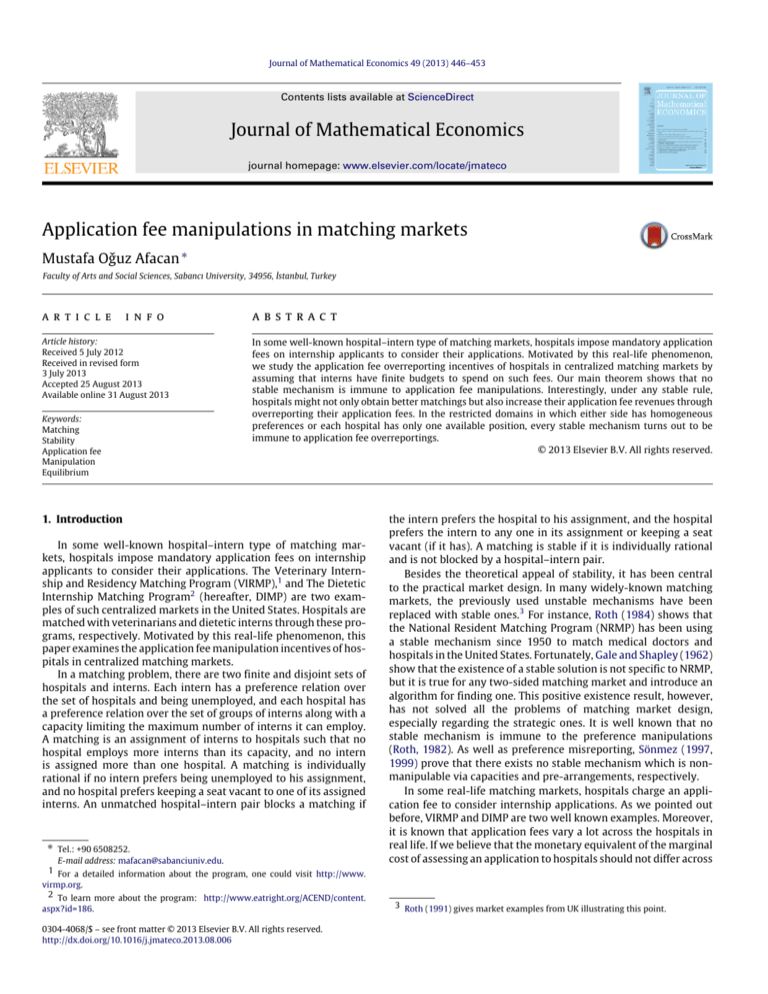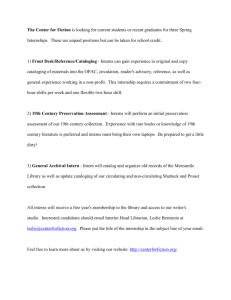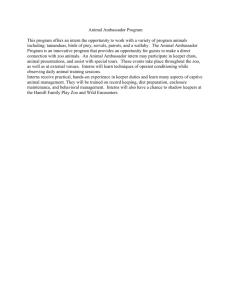
Journal of Mathematical Economics 49 (2013) 446–453
Contents lists available at ScienceDirect
Journal of Mathematical Economics
journal homepage: www.elsevier.com/locate/jmateco
Application fee manipulations in matching markets
Mustafa Oǧuz Afacan ∗
Faculty of Arts and Social Sciences, Sabancı University, 34956, İstanbul, Turkey
article
info
Article history:
Received 5 July 2012
Received in revised form
3 July 2013
Accepted 25 August 2013
Available online 31 August 2013
Keywords:
Matching
Stability
Application fee
Manipulation
Equilibrium
abstract
In some well-known hospital–intern type of matching markets, hospitals impose mandatory application
fees on internship applicants to consider their applications. Motivated by this real-life phenomenon,
we study the application fee overreporting incentives of hospitals in centralized matching markets by
assuming that interns have finite budgets to spend on such fees. Our main theorem shows that no
stable mechanism is immune to application fee manipulations. Interestingly, under any stable rule,
hospitals might not only obtain better matchings but also increase their application fee revenues through
overreporting their application fees. In the restricted domains in which either side has homogeneous
preferences or each hospital has only one available position, every stable mechanism turns out to be
immune to application fee overreportings.
© 2013 Elsevier B.V. All rights reserved.
1. Introduction
In some well-known hospital–intern type of matching markets, hospitals impose mandatory application fees on internship
applicants to consider their applications. The Veterinary Internship and Residency Matching Program (VIRMP),1 and The Dietetic
Internship Matching Program2 (hereafter, DIMP) are two examples of such centralized markets in the United States. Hospitals are
matched with veterinarians and dietetic interns through these programs, respectively. Motivated by this real-life phenomenon, this
paper examines the application fee manipulation incentives of hospitals in centralized matching markets.
In a matching problem, there are two finite and disjoint sets of
hospitals and interns. Each intern has a preference relation over
the set of hospitals and being unemployed, and each hospital has
a preference relation over the set of groups of interns along with a
capacity limiting the maximum number of interns it can employ.
A matching is an assignment of interns to hospitals such that no
hospital employs more interns than its capacity, and no intern
is assigned more than one hospital. A matching is individually
rational if no intern prefers being unemployed to his assignment,
and no hospital prefers keeping a seat vacant to one of its assigned
interns. An unmatched hospital–intern pair blocks a matching if
∗
Tel.: +90 6508252.
E-mail address: mafacan@sabanciuniv.edu.
1 For a detailed information about the program, one could visit http://www.
virmp.org.
2 To learn more about the program: http://www.eatright.org/ACEND/content.
aspx?id=186.
0304-4068/$ – see front matter © 2013 Elsevier B.V. All rights reserved.
http://dx.doi.org/10.1016/j.jmateco.2013.08.006
the intern prefers the hospital to his assignment, and the hospital
prefers the intern to any one in its assignment or keeping a seat
vacant (if it has). A matching is stable if it is individually rational
and is not blocked by a hospital–intern pair.
Besides the theoretical appeal of stability, it has been central
to the practical market design. In many widely-known matching
markets, the previously used unstable mechanisms have been
replaced with stable ones.3 For instance, Roth (1984) shows that
the National Resident Matching Program (NRMP) has been using
a stable mechanism since 1950 to match medical doctors and
hospitals in the United States. Fortunately, Gale and Shapley (1962)
show that the existence of a stable solution is not specific to NRMP,
but it is true for any two-sided matching market and introduce an
algorithm for finding one. This positive existence result, however,
has not solved all the problems of matching market design,
especially regarding the strategic ones. It is well known that no
stable mechanism is immune to the preference manipulations
(Roth, 1982). As well as preference misreporting, Sönmez (1997,
1999) prove that there exists no stable mechanism which is nonmanipulable via capacities and pre-arrangements, respectively.
In some real-life matching markets, hospitals charge an application fee to consider internship applications. As we pointed out
before, VIRMP and DIMP are two well known examples. Moreover,
it is known that application fees vary a lot across the hospitals in
real life. If we believe that the monetary equivalent of the marginal
cost of assessing an application to hospitals should not differ across
3 Roth (1991) gives market examples from UK illustrating this point.
M.O. Afacan / Journal of Mathematical Economics 49 (2013) 446–453
them as much as prevailing application fees do, then an interesting economic question turns out to be how can we explain the application fee differences in real-life matching markets? Naturally,
one can immediately argue that hospitals might announce application fees which are higher than their respective constant marginal
costs of assessing an application in order to increase their revenues.
While it can be a natural reasoning, in the current paper, we take
a different view and approach it from the manipulation point of
view in centralized matching markets where hospitals do only care
about their assignments.
How can a hospital manipulate matching mechanisms by
overreporting its true application fee, which is assumed to be equal
to the constant marginal cost of assessing an application to the
hospital throughout the paper, to obtain better interns? We know
that, in real-life matching markets, the presence of application fees
brings a certain budget constraint on interns: an intern cannot
finalize his application to a hospital unless he pays the application
fee of it, and, in this case, he ultimately loses the chance of being
matched with the hospital. Therefore, application fees play a role
in outcomes through constraints they impose on interns whenever
they have finite budgets to spend on such fees. This, in turn, might
enable hospitals to manipulate matching mechanisms through
overreporting their fees in the hope of obtaining better interns.
In order to study the application fee manipulation incentives
of hospitals, we employ the conventional matching market model
with additional application fee and budget profiles of hospitals
and interns, respectively. For the ease of analysis, it is assumed
that both hospitals and interns have non-monetary preferences, in
other words, they have preferences only over the opposite side of
the market. However, we also informally show that our main result
continues to hold under the quasi-linear payoff setting where
money is the numeraire. Since we are interested in the application
fee manipulation incentives, we fix the preference and capacity
profiles of hospitals, and let them announce their application
fees. Given a stable mechanism, each announced application fee
profile induces a preference-reporting game in which every intern
simultaneously submits a ‘‘feasible’’ preference relation, that is,
a preference relation such that the total application fees of the
acceptable hospitals4 according to it is less than or equal to his
budget. Then, the given stable mechanism assigns a matching
based on the submitted feasible preference profile of interns, and
the fixed preference and capacity profiles of hospitals.
In this game setting, we focus on pure Nash equilibria and say
that a mechanism is manipulable via application fees if, at a problem instance, there exist a hospital and a false application fee
(a higher fee than the ‘‘true’’ one) such that the hospital strictly
prefers every pure Nash equilibrium outcome under the false application fee profile to all of those under the ‘‘true’’ one.5 Regarding
the ‘‘true’’ application fee of a hospital, it is equal to the marginal
cost of assessing an application to the hospital, which is assumed
to be constant throughout the paper. Note that we only investigate
the application fee overreporting incentives, since, in our setting,
it is easy to see that hospitals can match with their preferred interns via underreporting their application fees, however, whether
it is true by overreporting is a subtle question.
We first show that, for any stable mechanism and announced
application fee profile, there always exists a pure Nash equilibrium
of the preference-reporting game. Then, our main theorem reveals
that there exists no stable mechanism which is non-manipulable
4 A hospital is acceptable to an intern if he prefers the hospital to being
unemployed.
5 Note that there is no selection issue in the case of multiple equilibrium
outcomes, since the manipulating hospital is required to be strictly better off in any
equilibrium outcome relative to every one under the true application fee profile.
447
via application fees. Interestingly, under any stable rule, hospitals
might not only obtain better assignments but also increase their
application fee revenues in any equilibrium by overreporting their
application fees. Lastly, we focus on some special restricted domains and show that if either side has homogeneous preferences
or each hospital has only one available position, then every stable
mechanism turns out to be immune to application fee overreportings.
We should emphasize that the introduced game setting totally
mimics the aforementioned budget constraint interns encounter
in matching markets with application fees. Namely, interns cannot
complete their applications to hospitals if they do not pay their
application fees, and, in this case, they lose the chance of being
matched with these hospitals. Given this real-world practice, since
stable mechanisms do not assign interns to their unacceptable
alternatives, under any feasible preference profile, they are not
matched with hospitals of which the application fees are higher
than their budgets.
Our paper is important not only for theoretical purposes, but
also for practical issues. Application fees are commonly observed in
various real-life matching problems. Given the prevalence of such
fees, our main theorem demonstrates that the relevant economic
agents might have strong incentives to manipulate them, as, by
doing so, they not only obtain better matchings but also increase
their total application fee revenues. While this theoretical result
does not necessarily show that hospitals do indeed overreport their
application fees in real-life, it demonstrates a potential for such
manipulation and justifies the observed application fee differences
from another point of view.
Another important point is the practical differences between
application fee manipulations and the other well-known types
of manipulations in the literature: preference, capacity and prearrangement. They are different in some important ways. First, as
we will formally investigate in the discussion section, there are
problem instances at which every stable mechanism is manipulable via application fees, yet, non-manipulable via capacities and
pre-arrangements. While this is not true for preference manipulations, application fee channel might still be more advantageous
due to the additional higher revenue aspect.
2. Related literature
This paper contributes to the extensive incentive theory literature in matching markets. In the two-sided intern–hospital
matching setting, Roth (1982) shows that no stable mechanism is
strategy-proof.6 However, if the preferences of hospitals are common knowledge, then a strategy-proof and stable mechanism
exists (Roth, 1982; Dubins and Freedman, 1981). Apart from
the preference misreporting, Sönmez (1997, 1999) demonstrates
that no stable mechanism is immune to the capacity and prearrangement manipulations, respectively. On the other hand, in the
one-sided school choice context,7 as opposed to the stable mechanisms, the other two well-known Boston and Top Trading Cycles mechanisms are immune to capacity manipulations (Kesten,
2012). Kesten (2012) also shows that the student-optimal stable
mechanism gains immunity to capacity manipulations under the
6 A mechanism is strategy-proof if no agent ever has an incentive to misreport
his preference.
7 While the one-sided school choice and two-sided intern–hospital matching
problems are mathematically isomorphic to each other, they are conceptually
different. In school choice problems, schools are considered as objects to be
consumed. They have exogenously given priorities as opposed to hospitals having
privately known preferences. Hence, in school choice problems, schools are not
considered as strategic and only the students’ welfare is taken into account.





